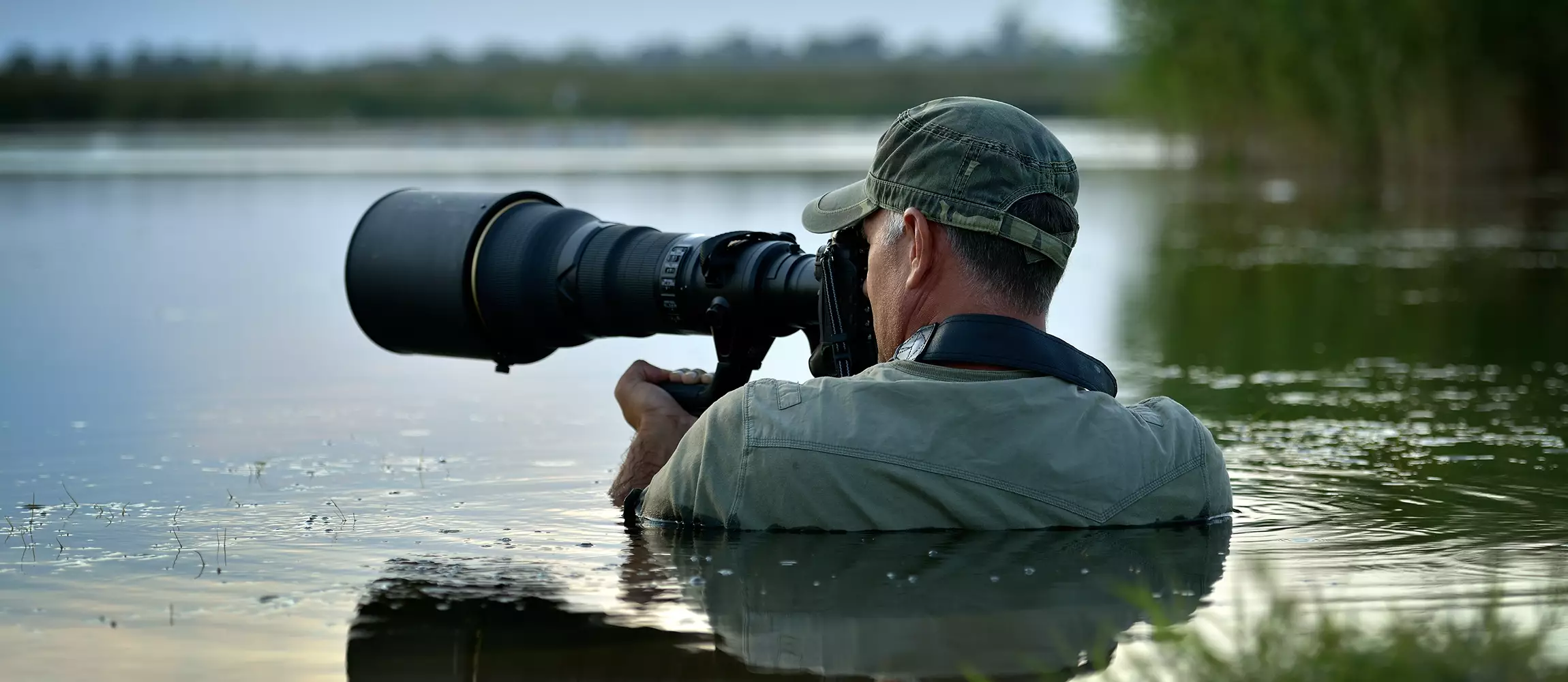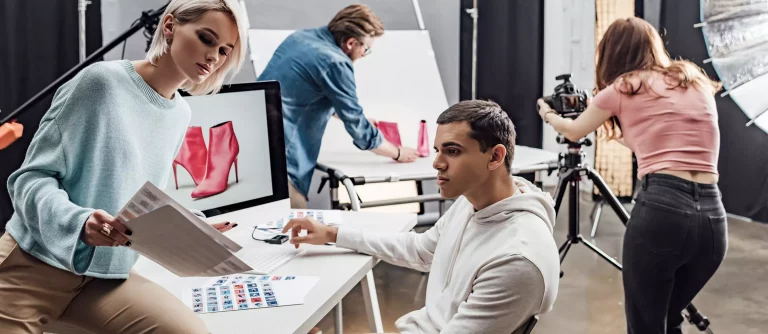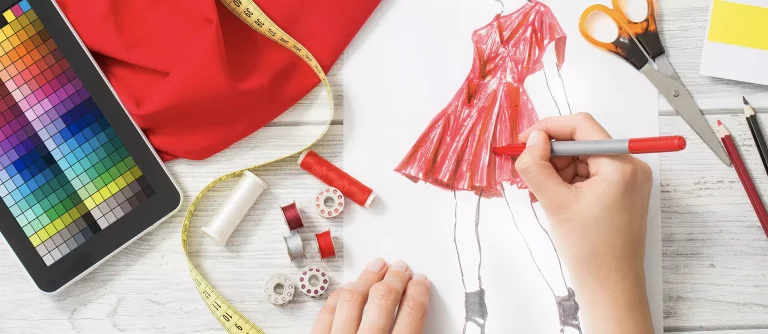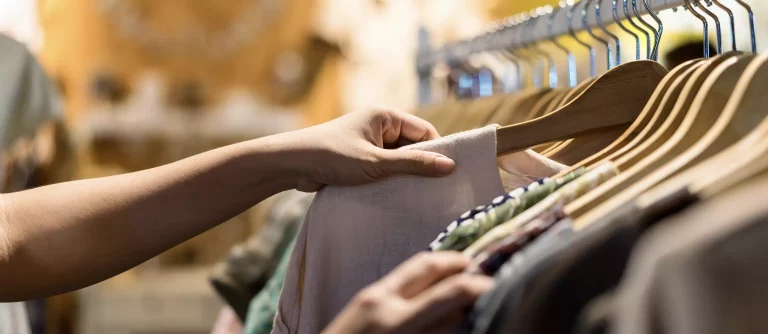How To Become a Wildlife Photographer
Do you carry a camera with you everywhere you go? Do you love animals of all sizes and types? A wildlife photographer is a one-of-a-kind vocation that combines artistry, adventure, and, of course, animals.
Starting a career in nature photography isn’t always easy, but it’s a true calling for the right person. Here’s a closer look at how to become a wildlife photographer, including what the job is like and what type of education and skills you need.
What is a Wildlife Photographer?
A wildlife photographer captures images of animals in their native habitat. You’ll snap photos of their every behavior from hunting, sleeping, and simply hanging out. Although sometimes you’ll shoot at the zoo, most wildlife photography involves taking pictures of the animals in their natural environment, such as forests, savannahs, mountains, and more.
Some professional nature photographers take photos of a wide variety of animals. For example, they’ll travel to Africa on a safari and snap pictures of elephants, giraffes, hippos, and more. While many professional photogs make a living this way, the far more common approach is specialization. If you develop a reputation for shooting a specific animal well, clients will likely return to you with repeated requests for work.
Exploring the great outdoors and taking photographs is only part of the overall job. You’ll also need to manage your photography business. Networking, connecting with clients, meeting deadlines, and generally acting professionally all play an important role in your ability to earn money.
Previously, if you wanted to sell wildlife photographs, the biggest buyers were magazines. While some magazines, such as National Geographic, still pay top dollar for great photos, most of your work will likely sell to smaller companies for use on their social media pages. Many companies, across various industries, buy animal photos for use on their Facebook, Twitter, and Instagram pages.
What Does a Typical Workday for a Wildlife Photographer Look Like?
Wildlife photographers spend a significant amount of their day outside, seeking out animals to photograph. The workday can be long because most photographers capture their best shots during what’s called the Golden Hour.
The Golden Hour occurs twice a day. It’s the first hour of light following sunrise in the morning and the last hour of light before the sun sets. Also called the Magic Hour, the light during these times has a soft, warm quality that typically looks beautiful in photography.
Most of the workday will be spent tracking animals. You’ll need to traverse the landscape, which can involve hiking and climbing. Generally, wildlife photographers don’t take time off due to bad weather, so you’ll need to be comfortable in the hot sun, rain, or snow.
After you’ve taken your photographs, you’ll need to use photo editing software to sort through and edit them. Finalizing the photos requires extensive knowledge of the software you use plus an understanding of design.
Will I Like Being a Wildlife Photographer?
No other job is quite like that of a wildlife photographer. For many people, it’s a dream vocation. However, it does have quite a few unique challenges, too. Before embarking on a career in wildlife photography, it’s important to understand the details of the job, so you can see if it sounds like something you’d enjoy.
Characteristics and Skills of a Good Wildlife Photographer
First, you’ll need excellent photography skills. You’ll need to understand composition, lighting, color balance, and other factors required in capturing awesome images. Additionally, you’ll need to understand photography well enough that you can act quickly because you’re dealing with fast-moving animals that aren’t going to stop and pose for pictures.
Additionally, you’ll need extensive knowledge about the animals you plan to photograph. You’ll need to understand their behavior, environment, and more. A solid background in animal biology and behavior allows you to understand where to find the animals you’re seeking.
Also, you’ll need to be physically fit. You’ll spend your days hiking in the wilderness while carrying around camera equipment. Aside from being in good shape, you’ll also need a familiarity with how to survive in the wild.
Finally, you’ll need lots of patience. Capturing the perfect shot doesn’t happen quickly. You’ll likely spend a ton of time each day sitting and waiting. Photographing wildlife is often a slow, fairly tedious process, so you’ll need to be comfortable with times without much action.
Why You Might Not Like Being a Wildlife Photographer
The job of a wildlife photographer isn’t for everybody. You might not like this type of work if you aren’t comfortable with any of the following:
It Can Be Boring and Slow-Paced
As mentioned above, you’ll spend a lot of time waiting for the perfect shot. If you’re not a patient person, you’ll quickly grow frustrated at the day-to-day actions involved in photographing wildlife. You must be willing to snap hundreds of photos for every one that turns out well.
You Have to Go Outside, No Matter What
Wild animals don’t spend a lot of time inside. If you want to photograph wildlife, you’ll spend most of your time outdoors. You’ll need to be comfortable with rain, snow, and other inclement weather. Additionally, you’ll need to enjoy camping, as many wildlife photographers need to spend significant time living in a tent to stay closer to the animals they want to photograph.
You’re Completely Self-Reliant
As a wildlife photographer, you’re your own boss. It’s up to you to stay motivated and active. You’ll need to set your own schedule and direction. Part of this involves an understanding of animal behavior, so you can shoot the animals when they’re the most active. Wildlife photographers don’t get paid time off, so any vacation you take means you’ll lose out on potential income.
You’ll Need Artistic Ability
Finally, you’ll need at least some natural sense for design. While you can take photography classes to learn about composition, classes can’t teach you everything. You’ll need some innate idea of how to capture vibrant, compelling images. An interest in wildlife photography helps you understand what types of images other photographers capture and how you can stand out from the competition.
You’re Not Comfortable with the Inconsistent Income
Most professional nature photographers work on a freelance basis. A lack of salary can cause a lot of uncertainty, so make sure you’re okay with that type of life. Also, your ability to make money might vary throughout the year. For example, if you make most of your money from selling photographs of animals in the snow, you’ll need to plan for the summer months.
Typical Schooling for a Successful Wildlife Photographer
While formal education isn’t required to succeed in this field, it certainly can help you develop marketable skills. Plus, a degree in photography can act as a way to get your foot in the door when approaching clients. You have a few different options:
- Bachelor’s degree
- Master’s degree
- Certifications
Bachelor’s Degree
Most photographers who attend college pursue a bachelor’s of Fine Arts in Photography. While the specifics vary depending on the school’s curriculum, most photography students learn about digital photography, photo editing software, lighting, composition, the history of photography, and more.
Note that you won’t spend your entire time learning about animal and nature photography. Instead, you’ll gain a broad understanding of photography as a subject. However, any classes related to photographing fast-moving action, such as sports or news photography, can help improve your ability to snap wildlife.
A bachelor’s degree in photography from a college or fine arts institute will typically take four years to earn. Aside from photography classes, you’ll need to complete the institution’s general studies requirements, too. Many fine arts schools and community colleges also offer two-year associate degrees in photography.
While earning a photography degree is typically the most common path in terms of formal education, it’s not the only possible path. You can also dedicate your studies to animals by earning a degree in animal science, animal biology, wildlife and fish conservation, and similar. Of course, you’ll still need to learn photography somewhere, but understanding animal behaviors helps you track them down to shoot.
Master’s Degree
Should you pursue a master’s degree in photography? While bonus education can help you hone your craft to a high level, it does take about five to six years to complete and can cost quite a bit, too. However, if you’re truly committed to becoming a wildlife photographer, a master’s degree can help you stand out on the job market.
Some of the best graduate photography schools include:
- Yale
- UCLA
- Rhode Island School of Design
- School of the Art Institute of Chicago
Certifications
If a four-year (or more) degree sounds too expensive and time-consuming, consider Certifications. Many local colleges offer shorter classes during evenings and weekends. Although you won’t earn a degree, you can still learn a variety of skills, including how to operate a digital camera, how to use digital editing software, and more.
Another option is certification from the Professional Photographers of America. They offer two programs: Certified Professional Photographer and Certified Drone Photographer. They’re also a nationwide network of photogs of all skill levels.
Best Wildlife Photography Colleges
If you do plan to spruce up your skills by taking college classes, you can choose between either in-person or online classes.
Best In-Person Colleges for Wildlife Photography
In-person classes offer a traditional learning experience. You gain the advantage of hands-on instruction, including teachers who will go with you into the field to teach you as you photograph animals in real time. Top schools include:
Rhode Island School of Design
The Rhode Island School of Design is an elite, private design school in Providence, Rhode Island. Famous alumni include Seth MacFarlane and Shepard Fairey. The school offers a wide range of art-related areas of study, including both bachelor’s and master’s degree photography programs.
The average cost of a bachelor’s degree from RISD is $54,890 a year.
University of California Los Angeles
UCLA’s photography program is considered among the best in the world. They place a strong emphasis on the artistic nature of photography, so you can learn how to take pictures that help tell a story or present an idea. Many of the instructors have extensive real-world experience with the business of photography. Plus, the university is connected to several nearby museums, which presents the opportunity for students to display their work.
The average cost of tuition at UCLA is $13,293 per year.
School of the Art Institute of Chicago
The School of the Art Institute of Chicago is another world-renown art school with an impressive photography department. You’ll learn both the history of photography as well as all the latest technology, including photo editing software. Classes have a unique structure where undergraduate and graduate students work together.
A bachelor’s degree from SAIC costs $1740 per credit hour.
Best Online Schools for Wildlife Photography
Online photography classes typically work well. While you do miss out on the experience of having a teacher with you in the field, subjects such as design and the history of photography often lend themselves well to online learning.
While all of the schools listed above have at least some type of online learning component, here are three other options well-known for their entirely virtual photography instruction:
Savannah College of Art and Design
Located in Savannah, they offer a Bachelor of Arts in Photography, a Master of Arts in Photography, and a Master of Fine Arts in Photography. Their courses combine artistic design and technical mastery, with an emphasis on developing a portfolio by graduation. Additionally, they offer virtual gallery showings for students. Undergraduate tuition is $12,525 for three courses per quarter.
Michigan State University: Smartphone to DSLR
Check this one out if you’re looking for a complete summary starting with the most basic beginner info. You’ll learn composition, lighting, digital camera control, and everything else you need to take great pics. Additionally, each week you’re given actionable skills to use in the field. While it’s not the most in-depth course, it’s free, flexible, and acts as a great entry point.
Cornell
If you’re looking for a school with more of a pedigree, you could always choose Cornell. They offer seven Certified courses covering taking photographs, operating the camera, adding artistic expression, and how to develop a professional career. You can take as many classes as you like, earning a certificate for each one. Everything is done 100% online. Each certificate ranges in price from $1,290 to $9,800.
Can I Skip College and Teach Myself How to be a Wildlife Photographer?
While formal education can help you develop the skills needed for nature photography, it’s not the only path to take. Ultimately, your ability to capture great shots is what will bring you work. If you don’t want to, or can’t, attend college, consider the following three non-traditional paths instead:
Safari Tour Guide
Many people want to photograph animals but need help finding and shooting them. Aspiring wildlife photographers can conduct tours. You’ll lead a group into the wild and help them capture great shots. While you won’t be able to focus much on taking your own photos as the tour leader, the job can still help sharpen your photography skills and understanding of animal behavior.
Mentor / Protégé
No two wildlife photographers followed the same path to success. As a highly individual artform, learning the tricks of the trade is often far easier if you have personal guidance from an established professional. Try to find a mentor willing to teach you.
Finding a mentor isn’t always easy. Use the internet to find wildlife photography groups and forums. You’ll need to establish yourself as a friendly, eager student of nature pictures. Once you have some credibility among the members, you can try reaching out for advice from experienced professionals.
Hunting
Interestingly, learning how to hunt animals can help improve your ability to photograph them. You’ll develop the ability to track them, stay camouflaged for long periods of time, and other wilderness skills necessary for the great shot.
Wildlife photography is different from other types, such as fashion or portraits. There’s a far higher physical barrier to entry. If you’re comfortable outdoors and can take great pictures, you have a huge advantage over those who only have the photography ability.
Which Software Programs Do Wildlife Photographers Use?
Taking photos is only one part of developing great images. You’ll also need to familiarize yourself with several graphic design programs. Even if you don’t use each of these programs every day, you’ll need a basic understanding so you can properly communicate and transfer files to clients and others.
Adobe Photoshop
Adobe Photoshop is arguably the most popular photo editing and digital art software in the world. It allows you to manipulate images in virtually unlimited ways, including changing color layers, resizing, and removing errors.
Almost any type of art program, including most degrees related to photography, will likely have spent a fair amount of time using photoshop. If you’re starting from a beginner level, check out YouTube tutorials. You’ll find a wide range of free options to teach you the basics.
Corel PaintShop Pro
One major downside to Photoshop is that it’s pretty pricey. Corel’s Paintshop Pro is often considered an affordable alternative. While many features overlap, Paintshop Pro does lack some of Photoshop’s more advanced options, such as 3D modeling, enhanced typography options, and more.
Luminar 4
Luminar is a popular photo editing software that recently underwent a major upgrade. The new version includes several exciting AI-based features, including automatic sky replacement, sunray adjustment, smart contrast, and more. Even if you’re already familiar with Luminar, you’ll want to check out these interesting upgrades, available as a standalone app or Photoshop plug-in.
GIMP
For over 20 years, GIMP has been an industry leader in photo editing software. Although it’s not overly welcoming to new users, it’s a powerful program that allows you to work with layers, masks, and practically all other elements of an image.
Another major benefit of GIMP is that it’s completely free. If you’re looking for a powerful design tool but don’t want to spend Photoshop prices, you’ll want to check out GIMP. Just know that you’ll have to work a bit to learn how to use it.
Adobe Lightroom
Finally, we have Lightroom, another Adobe product. It’s probably the preferred option for professional photographers, even over Photoshop. It’s similar to Photoshop in terms of features but much simpler to use. Another benefit to Lightroom is its organizational capabilities. You can store your photos in several ways for easy searching.
While all types of photographers use lightroom, it’s especially popular in the fashion industry. Lightroom has many tools that work well to remove blemishes and enhance the appearance of skin.
What are the Best Blogs and Influencer Accounts to Follow?
You’ll find no shortage of famous, influential masters of animal photography to follow online. Whether you’re new to the genre or just learning about the big names, here are a few key people to follow.
Nick Nichols
Nick Nichols is a National Geographic photographer famous for his images of African images. Aside from his vibrant, colorful images, Nichols is also one of the most famous wildlife photographers to work in black and white. You can check out his portfolio on Instagram.
John Hafner
John Hafner is a famous photographer who’s shot animals all over the world, including Alaska and Zimbabwe. However, he’s most famous for his images of more everyday creatures such as turkey, deer, and elk.
When Hafner started in the industry, magazines ruled the day. He’s personally watched the shift away from magazines to social media and blogs, giving him a unique perspective on the business of the genre.
You can check out his work on both Instagram and his personal site.
Paul Nicklen
Paul Nicklen is one of the most popular and fastest-growing animal photographers on Instagram. He’s a National Geographic photographer, filmmaker, and marine biologist. Although well-known in general, he’s often especially appreciated for his photos of ocean animals, including many famous whale shots.
5 Ways to Break into the Wildlife Photography Industry
Fortunately, there’s no one way to find success as a wildlife photographer. With the right skills, determination, and perhaps a bit of luck, you can earn money selling your nature photos. Don’t feel discouraged if you have no clue how to start because options are available.
Here are five ways professional wildlife photographers have developed their careers:
Get Online
You want a robust, engaging portfolio website. To be clear, you can’t just put a site online and expect clients to stumble across it. You’ll need to use other methods to draw people to your site. Regardless, you want an up-to-date site online to use as a professional showcase of your work and abilities.
The easiest way is to use a website builder such as WordPress, Squarespace, or Wix. They’ll handle all the technical details so you can focus on design. Every aspect of your site should reflect your aesthetic and brand. It should look polished, your portfolio should be easy to navigate, and you should convey your personality and experience.
A working background in website design is fairly common for most photography majors, but if you need some quick lessons, consider a certification. Your website will help illustrate your professional design abilities, so make sure it’s well-done.
Get Social
Join professional organizations and connect with others in your field. Instagram is a popular spot for photographers of all types, including wildlife ones. Also, look into Facebook groups. The world of wildlife photographs is unique, even among other photographers, which makes it easy to connect with those interested in doing it professionally.
You’ll also want to maintain a LinkedIn page. While connecting with fellow photogs is important, you also want to establish connections with potential clients, such as any sites or magazines that publish wildlife photos.
Become an Apprentice
Finding a mentor is ideal, but it can be difficult. Ideally, if you have a great portfolio, and establish a wide network of industry contacts, you can find someone willing to teach you how to do the job. Keep in mind you’ll need a can-do attitude and an eager willingness to help.
Continue Learning
You never want to rest on your past successes. Strive for lifelong learning, so you’re always growing as an artist. Certification courses work well because they’re affordable and usually focus on narrow topics.
Another option is YouTube videos. They offer the most flexibility, and they’re free. Staying on top of new photography techniques and trends is usually easy if you remain committed to regular, small lessons.
Keep Grinding
Wildlife photography isn’t an easy genre to break into. You’ll likely experience setbacks along the way, such as days where you don’t get a single good photo, or weeks where you struggle to find paying jobs. Just remember that the most successful animal photographers working today experienced a variety of setbacks, too. They decided to keep going, and if you have the same attitude, you can find the same success.
Frequently Asked Questions
Do you have questions about how to become a nature photographer? Here are the answers to the most common questions about this unique profession.
How Much Money Do Wildlife Photographers Typically Make?
According to the Bureau of Labor Statistics, photographers make an average of $36,280 per year, or about $17.44 an hour. This is the average earnings for all types of photographers.
Of course, those at the top of the profession can make much more. National Geographic employs only a handful of staff photographers (most are freelancers). While the exact salaries of these select few isn’t widely-known information, it’s estimated in the low-to-mid six figures.
What Do You Study to be a Wildlife Photographer?
You’ll need to master two disciplines.
First, you’ll need the highest level of proficiency with your camera. You’ll need to understand how to compose a vibrant picture, even in adverse conditions with a moving, uncooperative animal. Along with taking the photos, you’ll need to know how to use photo editing software and other digital tools.
Next, you’ll also need outdoor skills. You’ll need to understand the behavior and location of the animals you intend to photograph. You’ll also need a thorough understanding of basic outdoor safety, especially if you often set out for the day by yourself.
Is Wildlife Photographer a Good Career Choice?
Truthfully, there’s no other job quite like that of a wildlife photographer. It’s unique even among other photography jobs.
If you like the outdoors, photography, and adventure, you’ll likely love the career of a wildlife photographer. However, keep in mind the opportunities are somewhat limited, plus the work itself can require rather extreme levels of physical exertion at times.
Are There a Lot of Job Openings for a Wildlife Photographer?
Somewhat. Years ago, most wildlife photography was published in magazines. However, the magazine industry is a shadow of what it once was, and staff photography jobs are scarce.
That said, freelancers can find plenty of opportunities online. Many brands want pictures of animals for marketing purposes. It makes sense, too. Animals have a wide, non-controversial appeal that works well with everything from a bank to a car company and much more.
What’s the Best Website to Find Wildlife Photography Job Listings?
While you can try some of the larger job boards such as Ziprecruiter and Glassdoor, wildlife photographer is a fairly specialized niche within the world of photography.
Some of the best leads for jobs will come from professional organizations and similar groups. Because not everyone has the skills to photograph wildlife for a living, those who make a successful living at it tend to form a supportive, close-knit community. If you can befriend existing pros, they might be able to help you find success.
What are Some Big Companies that Hire Wildlife Photographers?
National Geographic is perhaps the biggest name in wildlife photography. They’re known for their globe-spanning photos that introduced millions of readers to exotic animals such as lions, cheetahs, and hippos. It’s published an issue every month since 1888, with no signs of stopping anytime soon.
Beyond NatGeo, another big name is Audubon, the official magazine of the National Audubon Society. It’s one of the most famous bird watching magazines. (Bird Watching is another popular choice.)
Also, don’t forget about Wild Planet Photo Magazine. It’s the largest digital-only outdoor wildlife photography magazine. You’ll find not just amazing pictures of animals, but an emphasis on photography education, too. Amateurs can even send in their shots to potentially show up in future issues.







